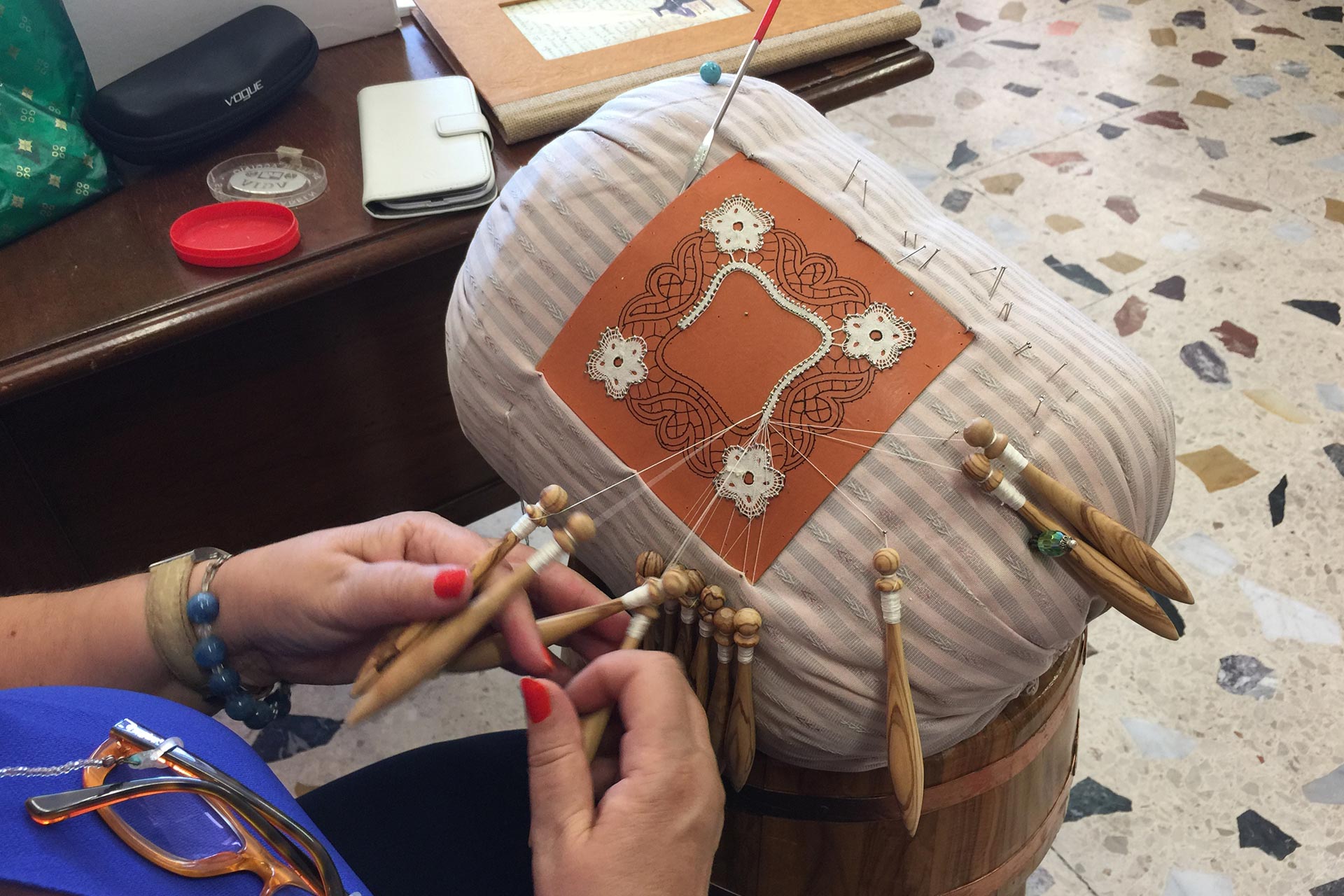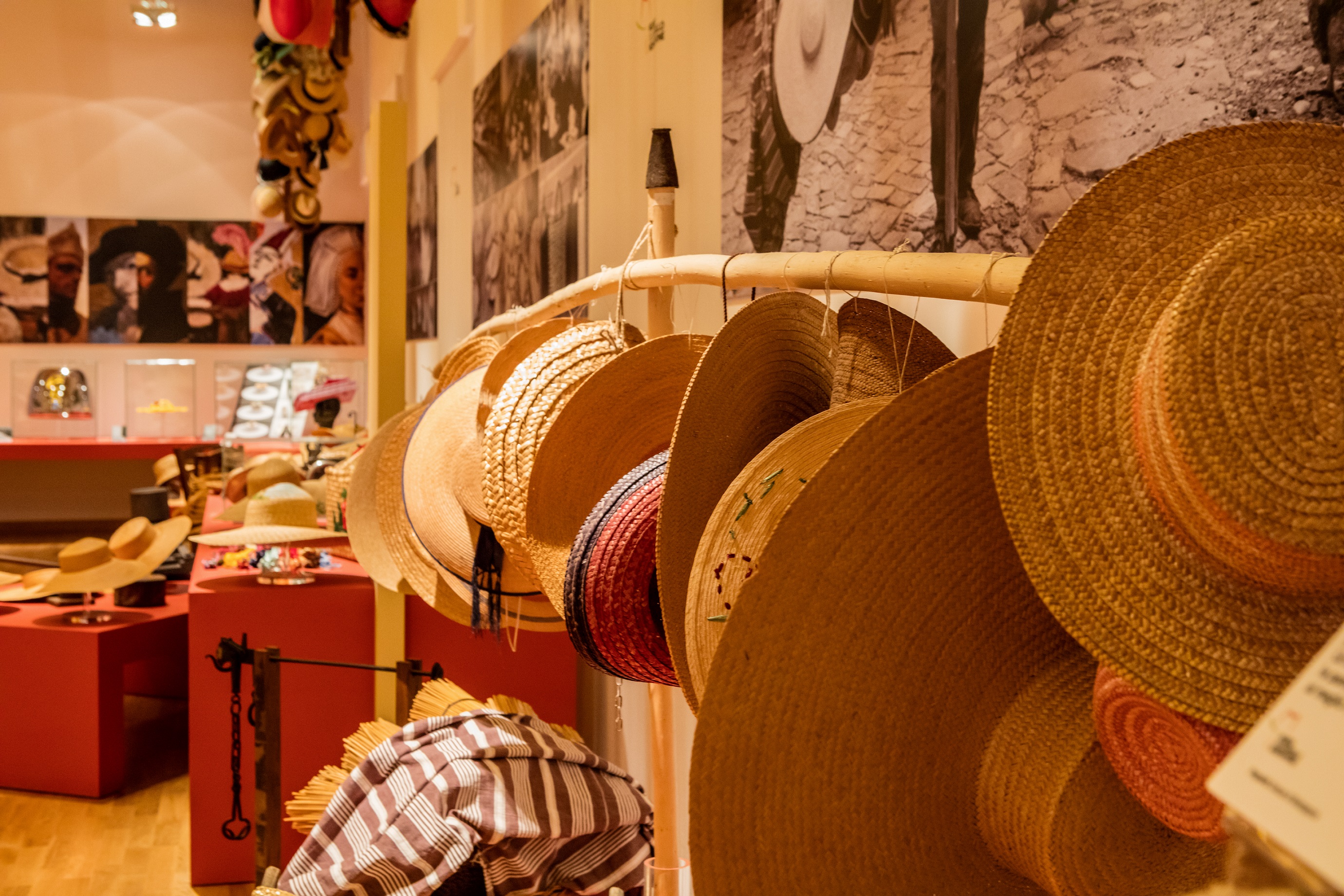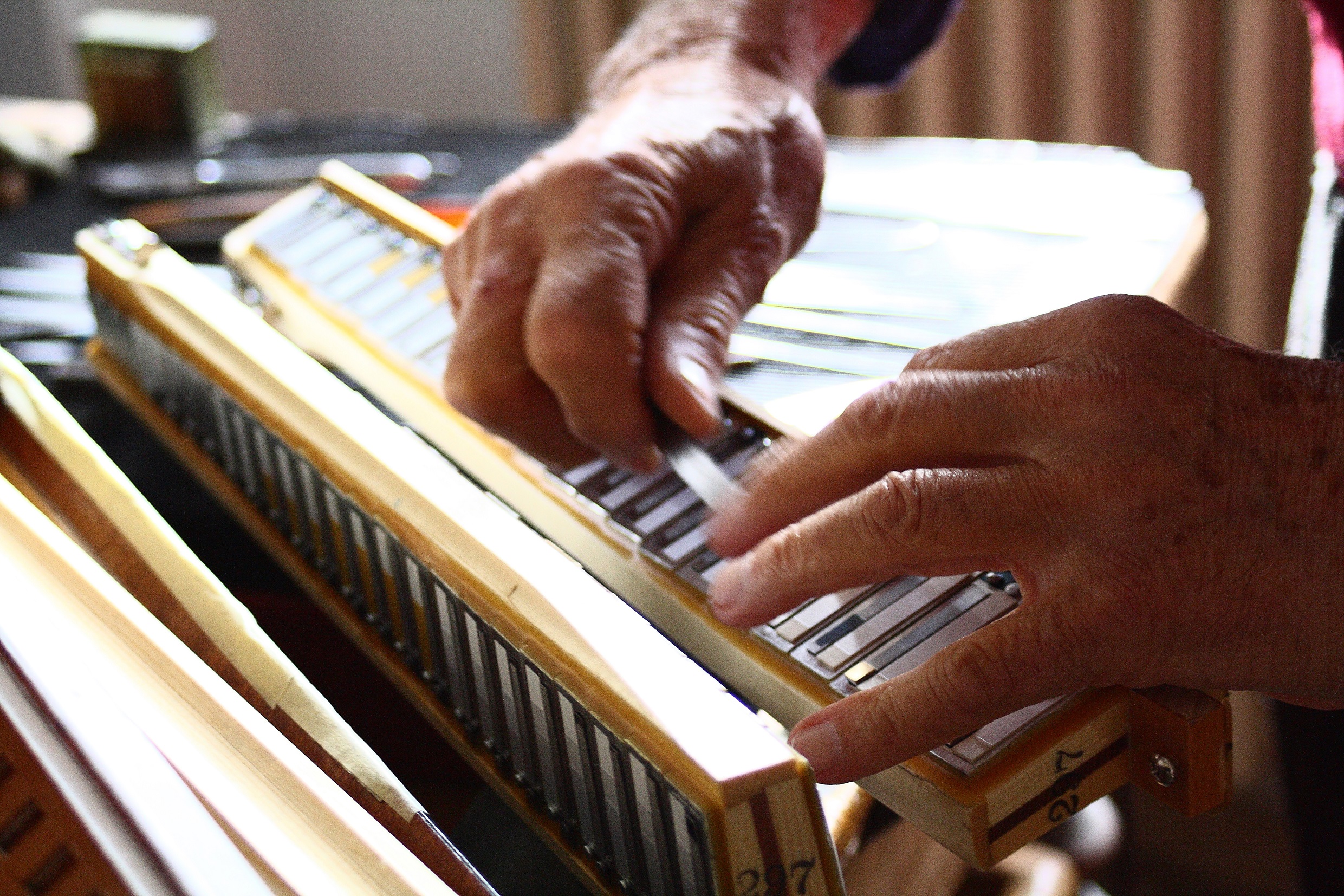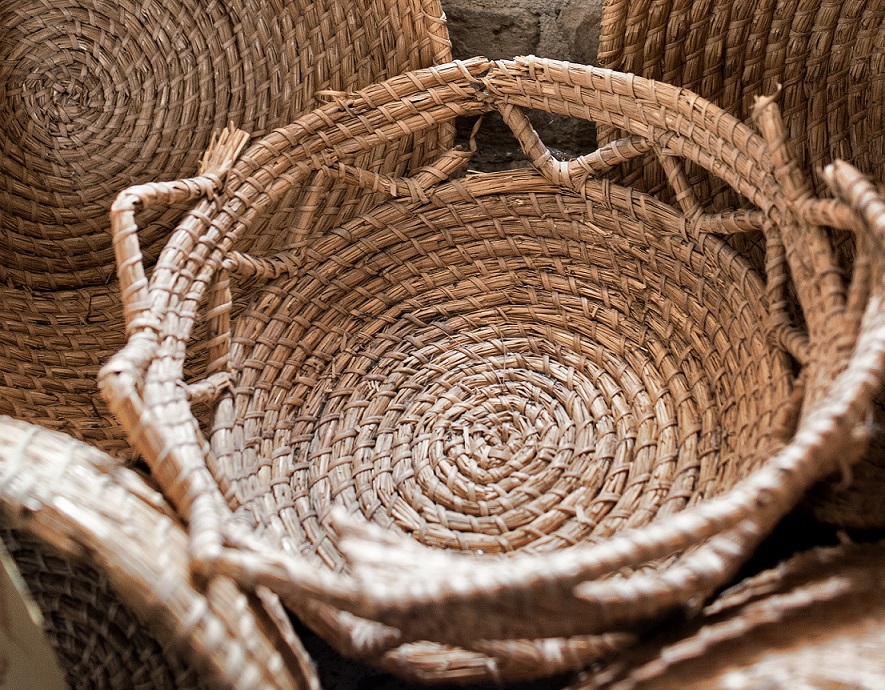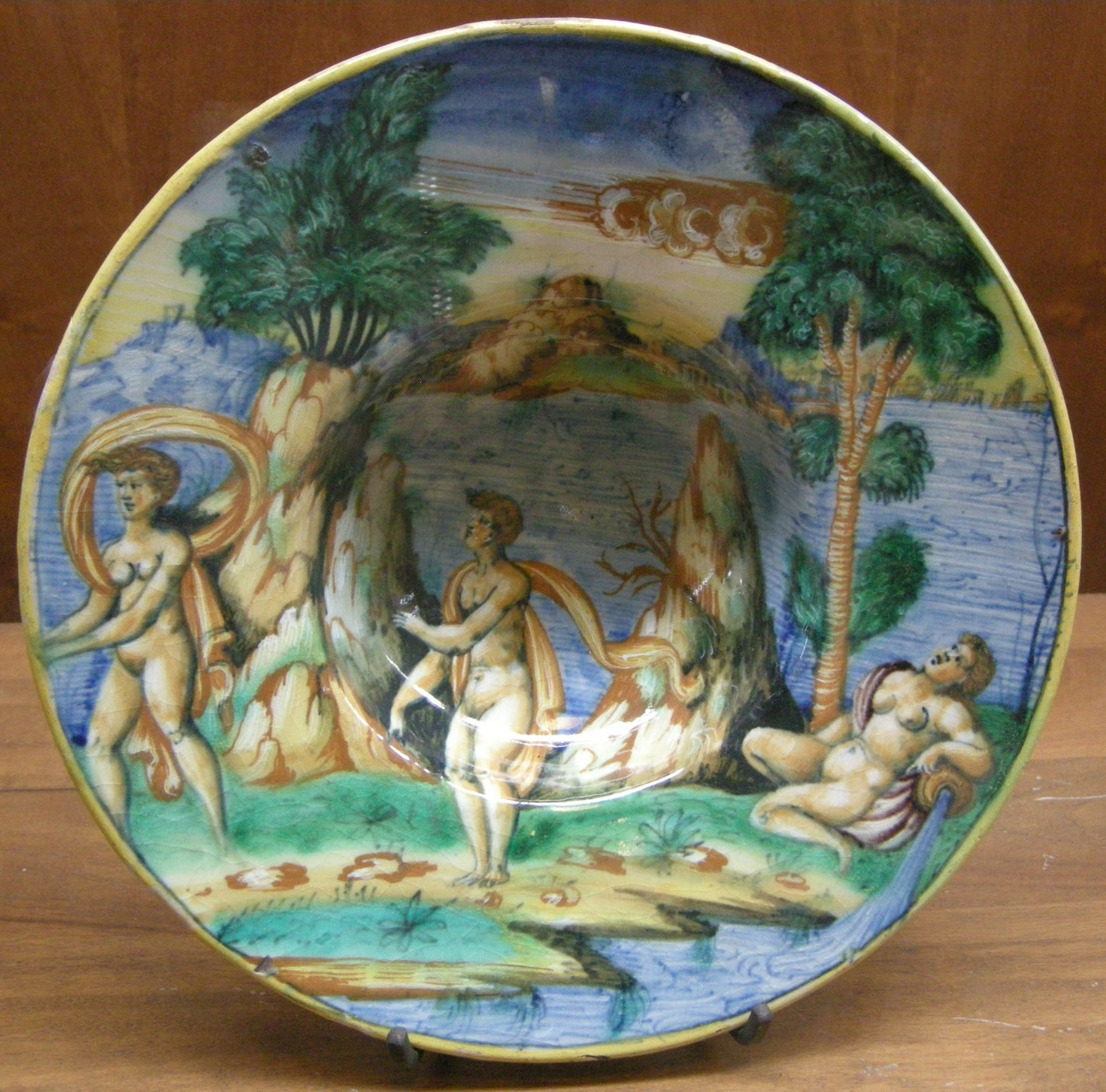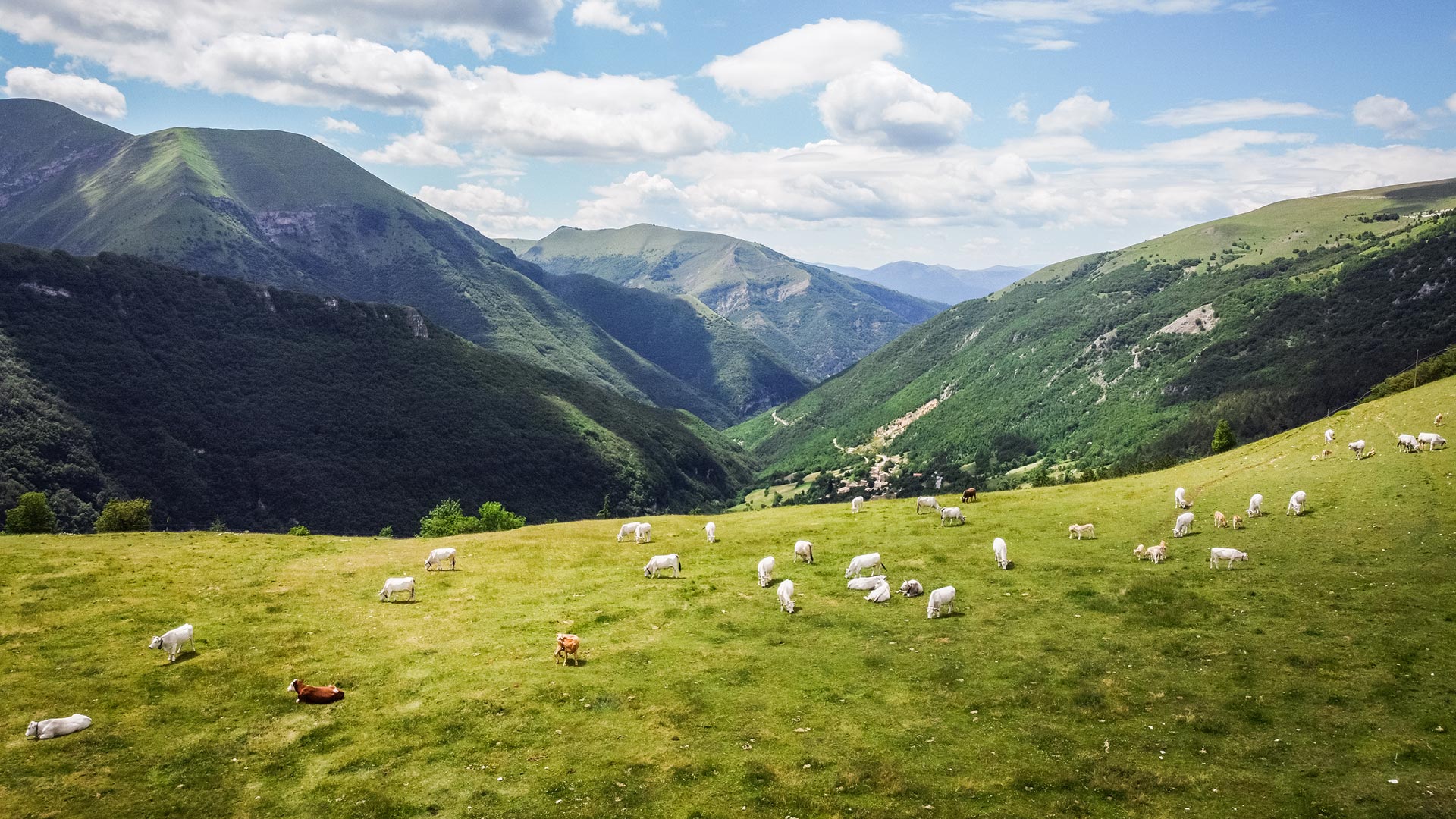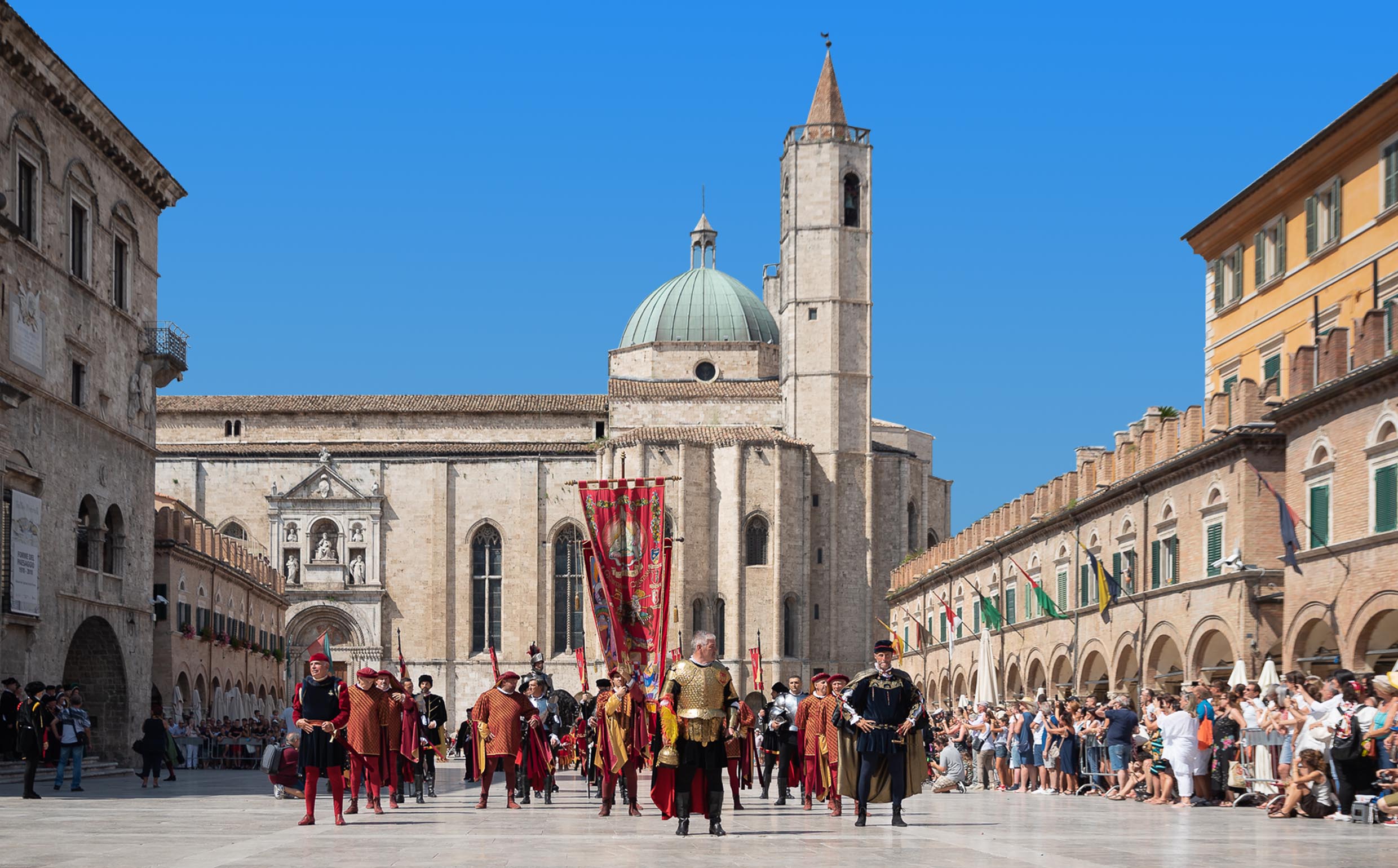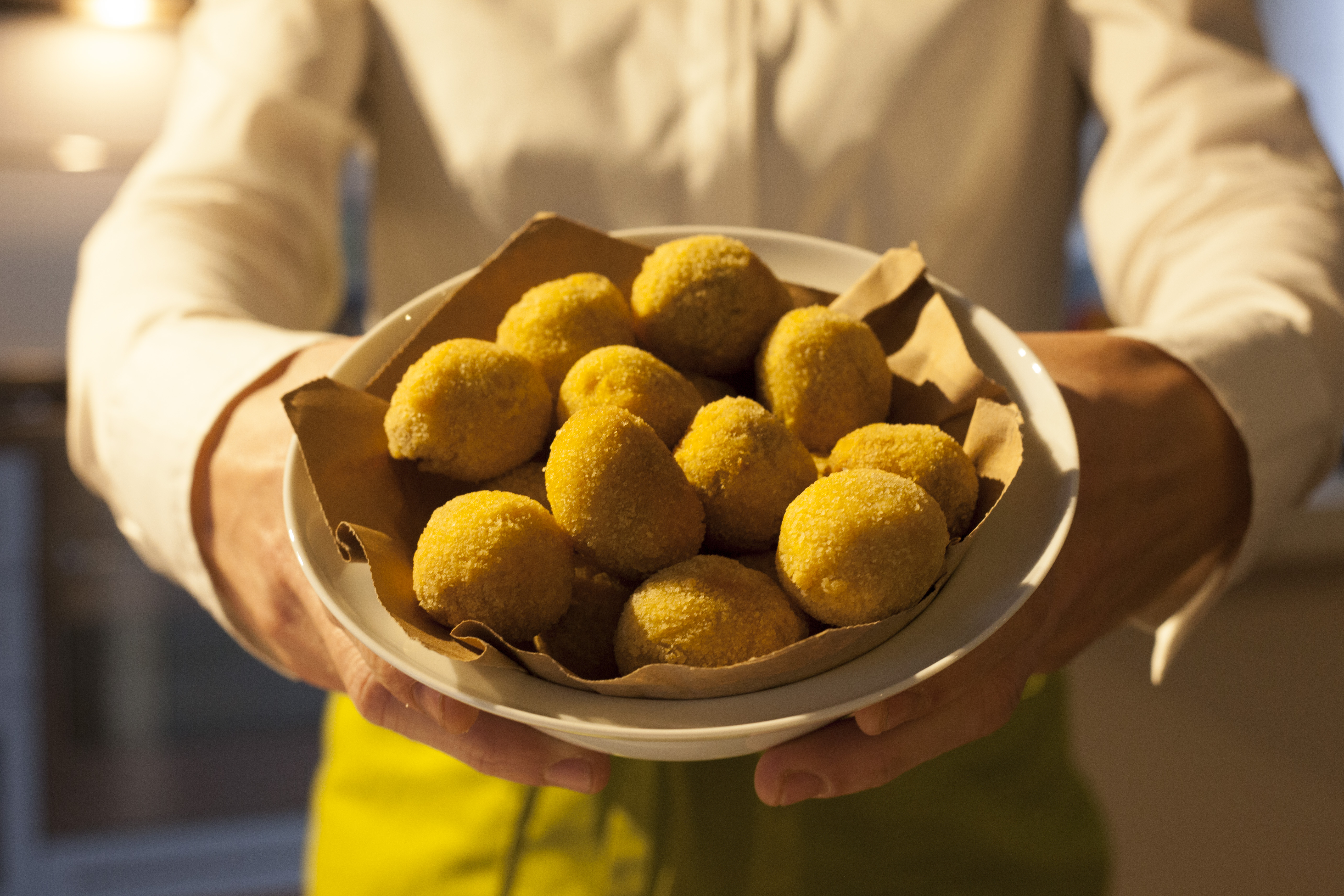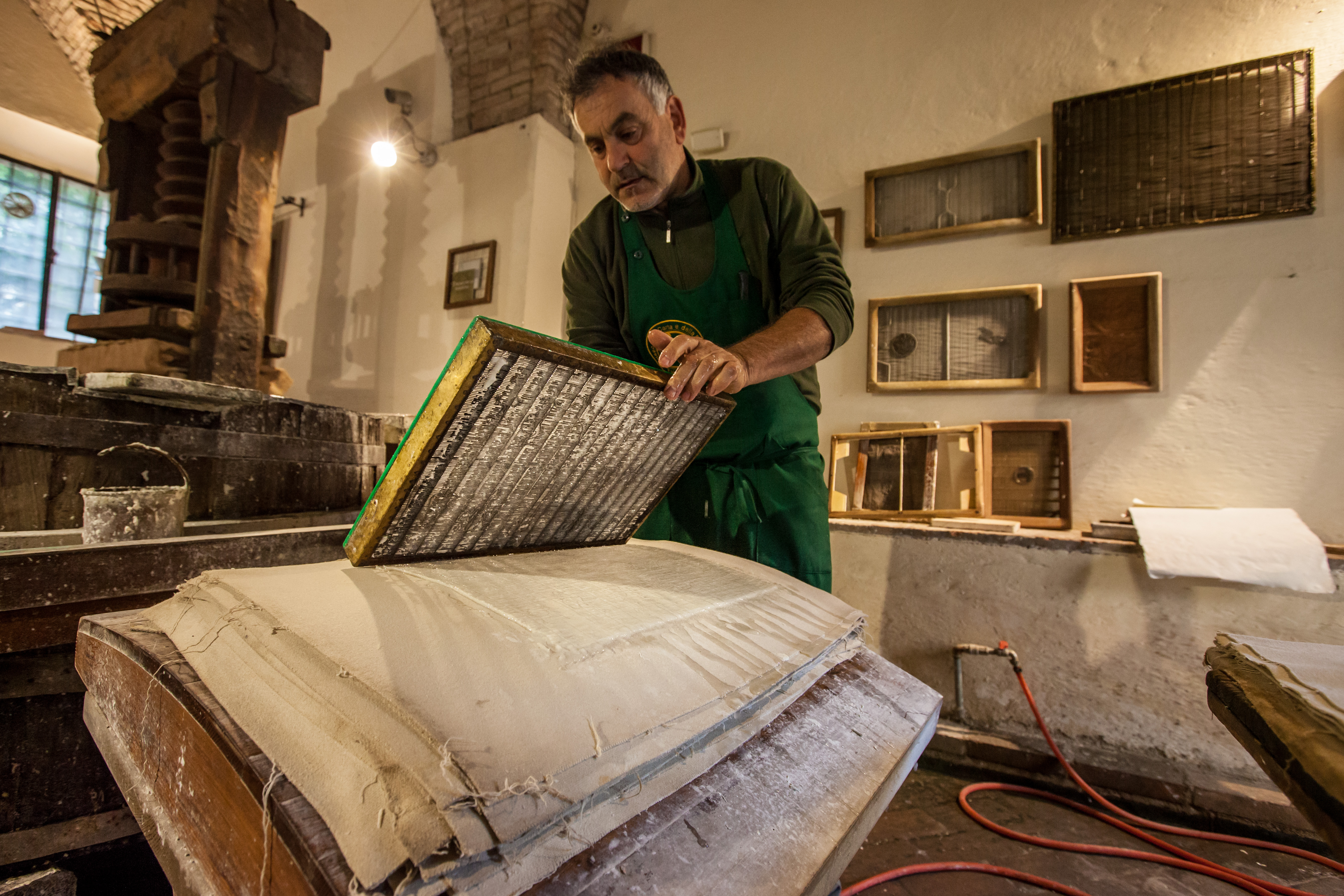Craftsmanship - Marche Tourism
For artisan skill, there’s nowhere in Italy like Le Marche region, populated with family businesses that handcraft paper from hemp, weave basket bags for Italy’s biggest fashion houses, and stitch the leather balls used in an ancient sport. Craft tradition is deeply rooted in the region: there are so many places where you can appreciate the most typical handicraft.
Leatherworking is one of the oldest traditions as it dates back to the Middle Ages. In modern times in the area of Macerata and Fermo there’s a large number of factories producing shoes, bags and leather goods. Tens of workshops for shoe manufacturing flourished here at the end of the 19th century and this activity was for Montegranaro the main source of income.
Paper making is identified with the town of Fabriano, where a particular technique of watermark was introduced and later became a distinctive feature of print currency and banknotes.This paper making tradition has played such an important role that in modern times the former convent of St. Domenico has been turned into the Paper and Watermark Museum, where you can learn ancient working techniques and look at the machinery that was used in the Middle Ages.
Travertine is an ivory -coloured marble and it’s been particularly used in various stoneworking techniques in the area of Ascoli Piceno and Acquasanta Terme, where sculptors and stonecutters are still passing on this ancient craft . Majolica and terracotta working began in Medieval times and it was at its best during the Renaissance when, due to the patronage of the Della Rovere family , one of the most flourishing Italian industries was set up. The working of wrought iron is alsowidespread, especially in the area of Ascoli Piceno, in the municipalities of Force and Comunanza, where coppersmiths are still handing down this centuries' old tradition. In Jesi, Fossombrone and Fano you can find goldsmiths’workshops , due to the presence of internationally known artisans who have stood out for their original creations.
Furniture manufacturing is also famous worldwide. In the area of Pesaro in particular a large network of woodworkers ’ workshops has developed and has become, over the years , an avant-garde industrial sector which involves also other towns. Ostra is also considered as an important centre for antiques and furniture restoration whereas Pollenza stands out for the reproduction of antique furniture.
In Acquaviva Picena an interesting artistic tradition is still carried out: the manufacture of “paiarole”, i.e. baskets made with wheat straw, shoots from willow trees and various types of marshy reeds. They’re totally hand-made and only women look after their materials and production. In Montappone you can pay a visit to the Hat Museum, where all the phases of straw working and hat making are shown. The importance of this ancient craft is recalled in the event called “Il cappello di paglia” (The straw hat). On this occasion in the historic centre more than 200 artisans show the art of making straw hats.
Le Marche region if also known for the production if sophisticated musical instruments.
Castelfidardo now styles itself the world capital of the accordion. In its Museo Internazionale della Fisarmonica you can see more than 150 examples of the instrument. The town still has a thriving musical industry and claims that the piano accordion was developed here in 1863 from the more primitive Austrian squeeze box. If you are here in October, you can't miss the International Accordion Festival, with accordion players from al over the world.
Recanati is famous for the production of guitars while Ascoli Piceno is a thriving center for luthiers.
Lace making is one of Offida's most common crafts. Women can still be seen, seated at their doorways in old town passageways, working intently, often with great rapidity, with bobbins, threads of white or grey yarn and pins on designs of flowers and animals.Originally begun among working families in the 1400's, the art of lace making was later cultivated by religious orders and aristocratic families. It was the Benedictine nuns who encouraged the spread of this art, which led to an increase in production during the second half of the 1600's. Recently the Offida Craft Lace Co-operative was set up to encourage the production of the high-quality Offida lace and to sell it directly to the customer.
